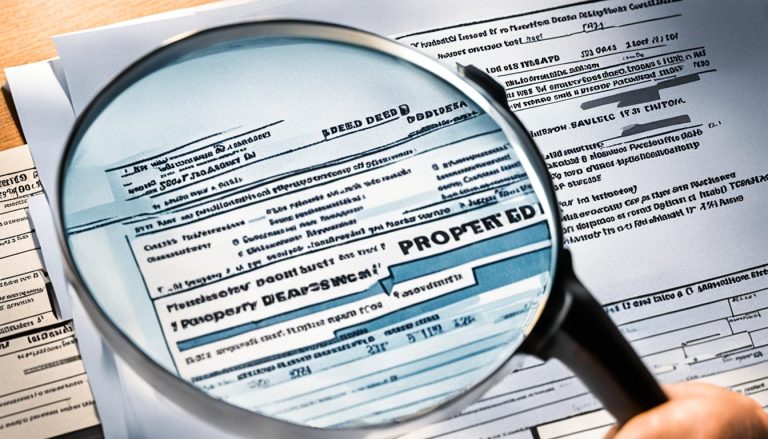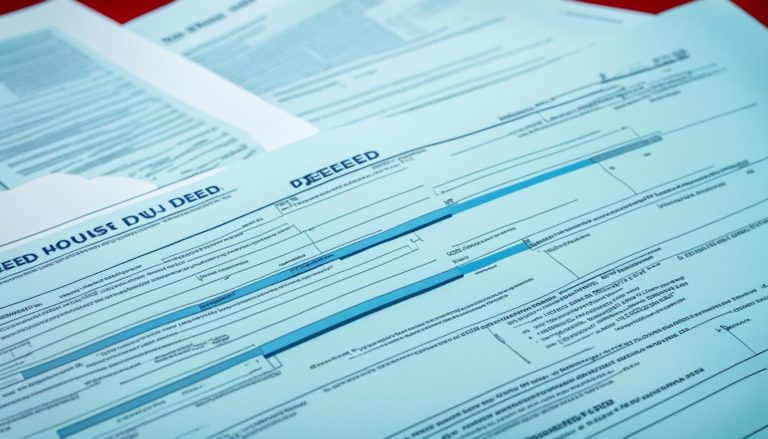The HM Land Registry Practice Guides cover key aspects of property conveyancing, land registration rules, and best practices. They focus on first registrations, searches, leases, charges, and insolvency. The guides provide reliable advice from the UK’s land registry authority.
Introduction to HM Land Registry Practice Guides
The HM Land Registry Practice Guides offer a vast collection of official advice, made for the UK’s land registry. They target mainly solicitors, conveyancers, and other legal pros handling property sales and land registration. These guides dive into details, processes, and top methods for property conveyancing and law.
The official property guides and hm land registry manuals tackle a wide array of topics. This includes first property listings, searches, leases, and charges. They help legal experts deal with the complex nature of property conveyancing and ensure they follow UK land registration rules.
If you’re a seasoned professional or just starting, the HM Land Registry Practice Guides are essential. They explain the twists and turns of buying and selling property and handling land records. With their step-by-step advice, these guides make legal processes smoother, more precise, and align with industry best practices.
| Key Features of HM Land Registry Practice Guides | Benefits for Legal Professionals |
|---|---|
|
|
Legal experts benefit greatly from the info in the HM Land Registry Practice Guides. They can boost their knowledge, make conveyancing work smoother, and offer better service to clients. These guides are crucial for anyone dealing with buying and selling property and land records in the UK.
Types of HM Land Registry Practice Guides
The HM Land Registry Practice Guides cover a lot about property conveyancing and land rules in the UK. They are divided into categories. Each one gives advice for legal professionals on the best ways to do things.
Guides 1 to 10: First Registrations and Fundamental Processes
The first batch focuses on registering properties and key processes like transfers and dealings. They offer clear steps and detailed explanations. This helps meet the latest land registration rules and property conveyancing needs.
Guides 11 to 19: Searches, Restrictions, and Third-Party Interests
This part looks at complex matters like official searches and third-party interests. It gives solicitors and conveyancers thorough guidance. This helps in dealing with important legal processes and looking out for clients’ interests.
Guides 20 to 29: Leases, Charges, and Insolvency
These guides extensively cover topics on leasehold properties, charges, and insolvency. They are a vital resource for legal experts. They ensure following up-to-date conveyancing best practices and land registry procedures.
Guides 30 to 39: Mortgage Documentation, Disputes, and Indemnity
Guidance on mortgage documents, dispute resolution, and indemnity claims is provided here. It’s a must for solicitors and conveyancers. They assist in managing property finance and solving conflicts.
Guides 40 to 49: HM Land Registry Plans and Developing Estates
This set focuses on HM Land Registry plans and estate development. It’s great for those involved in property development and registration.
Guides 50 to 59: Requisitions, Easements, and Address for Service
This section deals with specific topics like requisitions and address registration. Legal pros use these guides to keep up with the real estate law reference and property law handbooks.
Guides 60 to 69: Commonhold, Islamic Financing, and Evidence of Identity
Here, you’ll find details on commonhold, Islamic finance, and ID proofs. These are key for those handling special or complicated property deals.
Guides 70 to 79: Discretionary Trusts, Charging Orders, and Overseas Entities
This lot covers discretionary trusts, charging orders, and foreign entities. They are essential for avoiding issues and following the right procedures in unique property cases.
Guide 81: Encouraging Digital Technology in Identity Verification
Guide 81 is about using digital tech in checking IDs. It guides on digital tools and electronic signatures recognised by the land registry.
Guide 82: Electronic Signatures Accepted by HM Land Registry
Guide 82 explains using electronic signatures in property deals. It keeps legal experts updated on hm land registry practice guides. This is as technology changes how we buy and sell properties.

Accessing and Integrating HM Land Registry Practice Guides
The HM Land Registry Practice Guides are online for free. Anyone can access and download them thanks to the Open Government Licence. This licence lets you use the information in other software and services. So, legal professionals and conveyancers can easily find and share these guides.
This collection of HM Land Registry manuals is vital for conveyancing best practices. It gives experts what they need to handle property deals and land registrations. With these official property guides, legal experts can boost their know-how. This leads to better work for their clients.
| Key Benefits of Accessing HM Land Registry Practice Guides |
|---|
|

Official Searches and Priority Periods
The HM Land Registry Guides explain why official searches and priority periods are key in buying property. They help keep land records accurate and protect everyone’s interests.
Types of Official Searches
Official searches get details from the HM Land Registry about a property, its owner, and any issues or ownership claims. Searches include:
- Land registry searches to check the owner and any charges or rules on the property
- Local authorities searches to spot planning rules, building codes, and local rules
- Environmental searches to find risks like floods, pollution, or mines
- Bankruptcy searches to see if the owner is in debt trouble
Priority and Priority Periods
Priority periods are vital in property deals, keeping all involved safe. When a search happens, a period is set. During this time, new property claims are put ahead of others.
The length of this period depends on the search and the deal. It’s usually 30 to 40 days, allowing for the deal to finish without new problems appearing.

| Search Type | Priority Period |
|---|---|
| Land Registry Search | 30 business days |
| Local Authority Search | 40 business days |
| Environmental Search | 30 business days |
| Bankruptcy Search | 30 business days |
Legal Processes and Conveyancing Queries
The HM Land Registry Practice Guides offer detailed help on a wide set of legal processes and conveyancing queries in property deals. They include clear explanations, with case studies and real-life examples. This shows how the guidance works in actual situations.
Case Studies and Examples
The guides have many case studies showing how to use HM Land Registry rules. They walk through different scenarios, from tricky legal processes to everyday conveyancing queries. This helps legal professionals understand how the advice can be put into practice.
Ask for Guidance: Complex Case Assistance
For complex case assistance, the Practice Guides suggest contacting the registry’s experts. They provide help with tough legal processes and conveyancing queries. This ensures professionals can handle difficult situations well.
Conclusion
The HM Land Registry Practice Guides are key for legal pros in the UK involved in property work. They cover many topics, from the basics to more complex issues like leases and insolvency.
These guides give detailed explanations, procedures, and top practices. They are a must-have for solicitors, conveyancers, and other legal pros. They help you stay on top of the law, whether the job is easy or tough.
Being official, the HM Land Registry Practice Guides are a trusted source. Keeping up with them helps you be better at your job. You can work more efficiently and provide the best service to your clients in the changing property and land law world.
FAQ
Who are the HM Land Registry Practice Guides intended for?
Designed for lawyers, property experts, and anyone in the legal field working on property dealings. They help professionals understand and navigate the complex world of property and land ownership.
What topics are covered in the HM Land Registry Practice Guides?
These guides dive deep into various themes around property transactions and land paperwork. They are split into sections like beginning property listings, researching property, renting agreements, financial claims, and dealing with bankruptcy.
How can I access the HM Land Registry Practice Guides?
The HM Land Registry Practice Guides can be found easily online. They are open to everyone and free to use, thanks to the Open Government Licence. This means you can learn from them, and even share the wisdom in your work or projects.
What information do the HM Land Registry Practice Guides provide on official searches and priority periods?
They give in-depth details on looking up the history of a property and the timeframes involved. This is key in making sure everything is legally set before a property is bought or sold.






